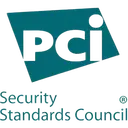Information security is of paramount importance. With the ever-evolving landscape of cyber threats and stringent compliance requirements, organizations must be proactive in identifying and mitigating risks. One essential tool for managing these risks is an information security (infosec) compliance risk register. This document helps organizations systematically track and address potential threats and vulnerabilities, ensuring they stay compliant with relevant regulations. In this blog post, we’ll explore the top 10 risks organizations should include in their risk register.
1. Data breaches
Data breaches are a top concern for organizations of all sizes. They can lead to financial losses, reputational damage, and legal consequences. According to the Cost of Data Breach Report by IBM, the global average cost of a data breach in 2023 was $4.45 million.
Include potential data breach scenarios and the steps to prevent and respond to them in your risk register.
2. Insider threats
Insiders with access to sensitive information can pose a significant risk. This includes employees, contractors, or anyone with authorized access. 81% of data breaches slip past traditional security controls due to weak or stolen passwords, according to a report by Verizon’s 2020 Data Breach Investigations Report (DBIR). To safeguard against insider threats, your organization must log the various insider threat vectors and countermeasures to prevent them.
According to the same IBM report, despite being relatively rare, attacks initiated by malicious insiders were the most expensive, averaging $4.90 million per breach. In addition, they took the longest to resolve, averaging approximately 10 months to identify and maintain the breach.
3. Phishing and social engineering
Phishing attacks remain a prevalent threat. These attacks target employees and trick them into divulging sensitive information. Be sure to assess the risk of phishing and include employee training and awareness programs as part of your risk register.
According to Proofpoint’s 2022 State of the Phish Report, 83% of organizations were victims of a phishing attack in 2021 alone. Colonial Pipeline famously became one such victim in May 2021 when the US fuel supplier was crippled by a ransomware attack made possible by a phishing scam. The organization, which supplies over half of the East Coast’s oil supply, was forced to halt operations after its business network and billing system were compromised, affecting millions of Americans and leaving 10,000 gas stations without fuel. Colonial Pipeline paid the attackers 4.4 million USD for the decryption key, but the total cost to their business is more difficult to determine.
4. Malware and Ransomware
Malware and ransomware attacks can lead to data encryption, data loss, and financial extortion. Document strategies for preventing, detecting, and responding to such incidents.
Cybercriminals don’t take vacations; however, some times of the year pose more risk than others. For example, according to ThriveDX, attempts in ransomware attacks increased by over 70% between November and January.
5. Unauthorized access
Unauthorized access poses a significant threat to the integrity and confidentiality of systems and data, leading to potential breaches or tampering. To mitigate these risks, it’s essential to implement robust access control mechanisms and authentication processes.
For example, role-based access control (RBAC) and multi-factor authentication (MFA) can be employed. The risk register should outline these access controls, ensuring proactive measures against unauthorized access, safeguarding sensitive information, and maintaining stakeholder trust.

Recommended for you
Compliance and risk management go hand-in-hand
Learn more about how to Implement policies, procedures, risk assessment and monitoring
6. Third-party risks
Third-party vendors and service providers can introduce vulnerabilities into your systems leading to data breaches and risks related to security, compliance, regulatory, operational, financial, and others.
Evaluate the risks associated with third-party relationships with a solid third-party risk management plan (TPRM) embedded in your risk register.
7. Regulatory non-compliance
Non-compliance with industry-specific regulations poses a significant risk to organizations, leading to potential legal consequences, financial penalties, and damage to reputation. Adherence to regulations such as SOC 2, GDPR, HIPAA, or PCI DSS is essential for maintaining the trust of customers, partners, and stakeholders.
A comprehensive risk register should thoroughly assess the organization’s compliance with relevant regulations and frameworks.
Mitigation strategies include:
- Regular compliance audits
- Documentation and record-keeping
- Compliance training for employees
- Incident response planning
- Continuous monitoring
Spoiler alert: Thoropass can help you with all of the above!
8. Lack of Patch Management
Outdated software and unpatched vulnerabilities create significant risks for information security. Attackers actively target these weaknesses, exploiting them to gain unauthorized access, execute malicious code, or compromise sensitive data. Ensuring a robust patch management process is crucial for minimizing these risks.
9. Remote work / distributed workforce
The increasing prevalence of remote work introduces new security challenges, requiring organizations to adapt their information security measures accordingly. Risks associated with remote work include unsecured home networks, use of personal devices, and potential exposure to phishing attacks.
10. Generative AI
You can be sure the modern hacker is using the latest technologies to launch attacks. This could involve using generative AI to create highly sophisticated phishing schemes or even realistic speech for phone-based social engineering attacks. Potential threats from generative AI are also key to include in your risk register.
Remember, in this new AI world, you can fight fire with fire: AI-driven adaptive security mechanisms dynamically adjust security mechanisms in response to evolving threats. Machine-learning models can learn from new attack patterns and update controls, configurations, and policies in real time, making breach detection and containment 27% faster.
It’s important to note every organization’s infosec compliance risk register will be unique and tailored to its specific needs and circumstances. These top 10 risks serve as a foundation for building a comprehensive risk register, but it’s crucial to conduct a thorough risk assessment to identify organization-specific risks accurately.
An infosec compliance risk register is a vital tool for managing information security risks and ensuring compliance with industry standards and regulations. By including these top 10 risks in your register, you can lay a solid foundation for a proactive and effective security strategy, helping to protect your organization’s valuable assets and reputation in the ever-evolving world of information security.
Get expert insight
Understand what compliance looks like at your organization
Book a free, 15-minute AMA with one of our in-house experts and get the answers to your compliance questions. No strings attached.

Related Posts
Stay connected
Subscribe to receive new blog articles and updates from Thoropass in your inbox.
Want to join our team?
Help Thoropass ensure that compliance never gets in the way of innovation.














.png)